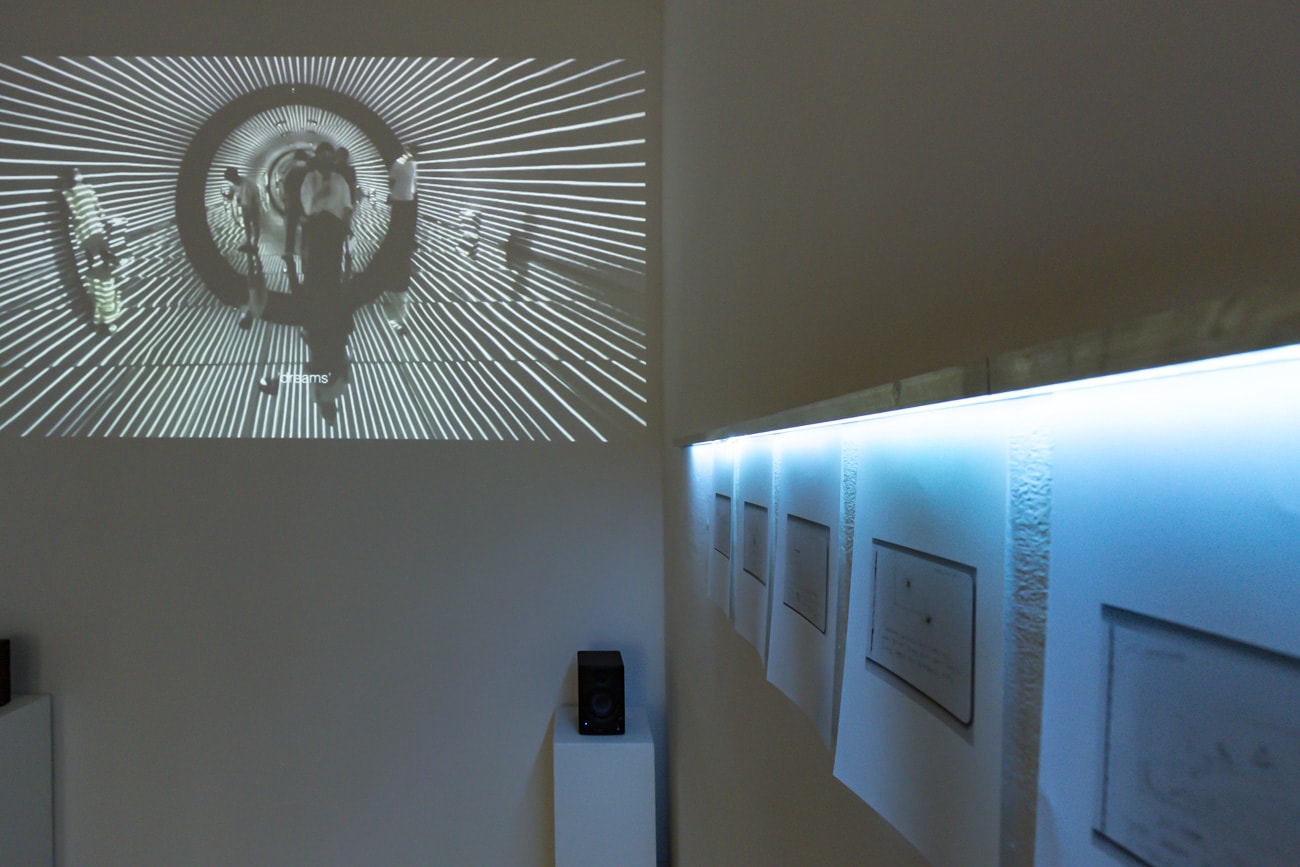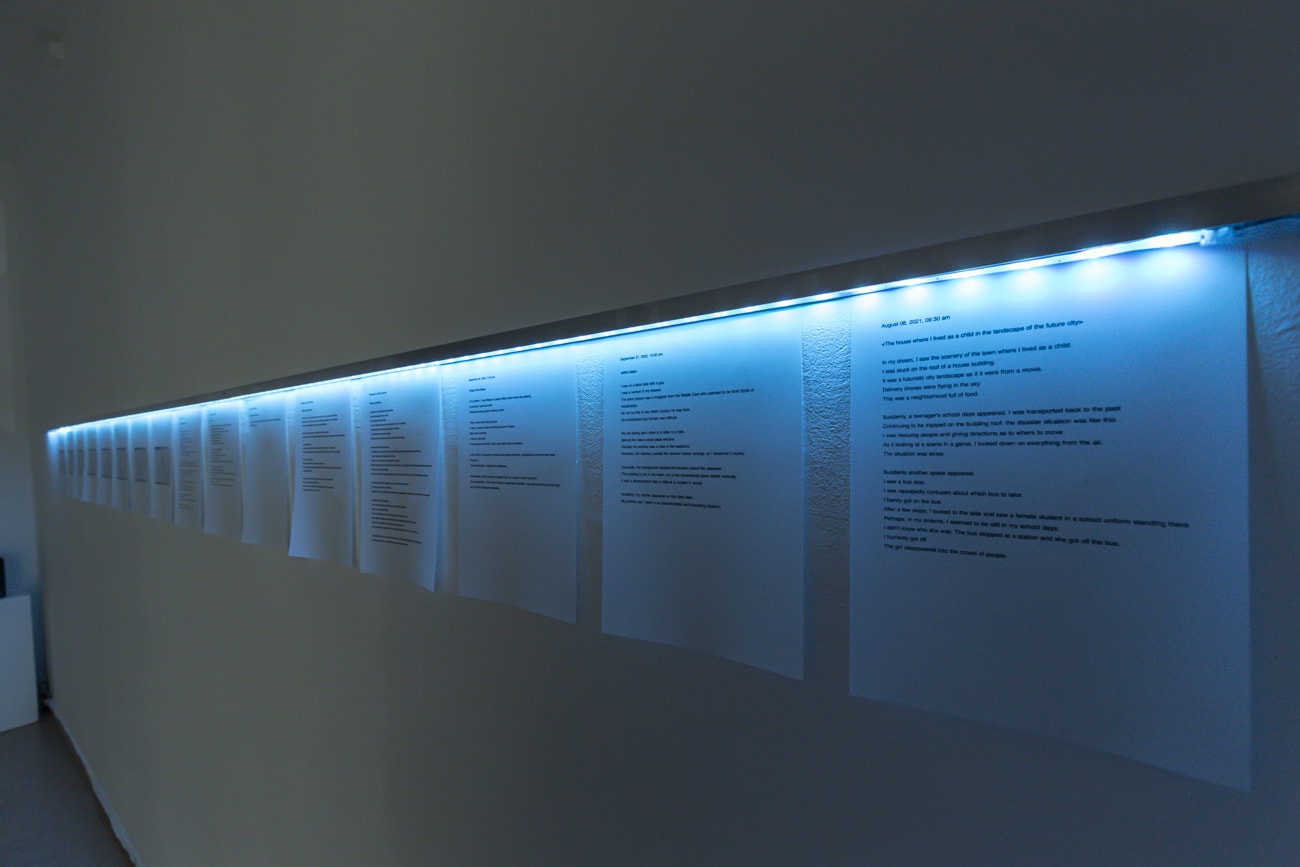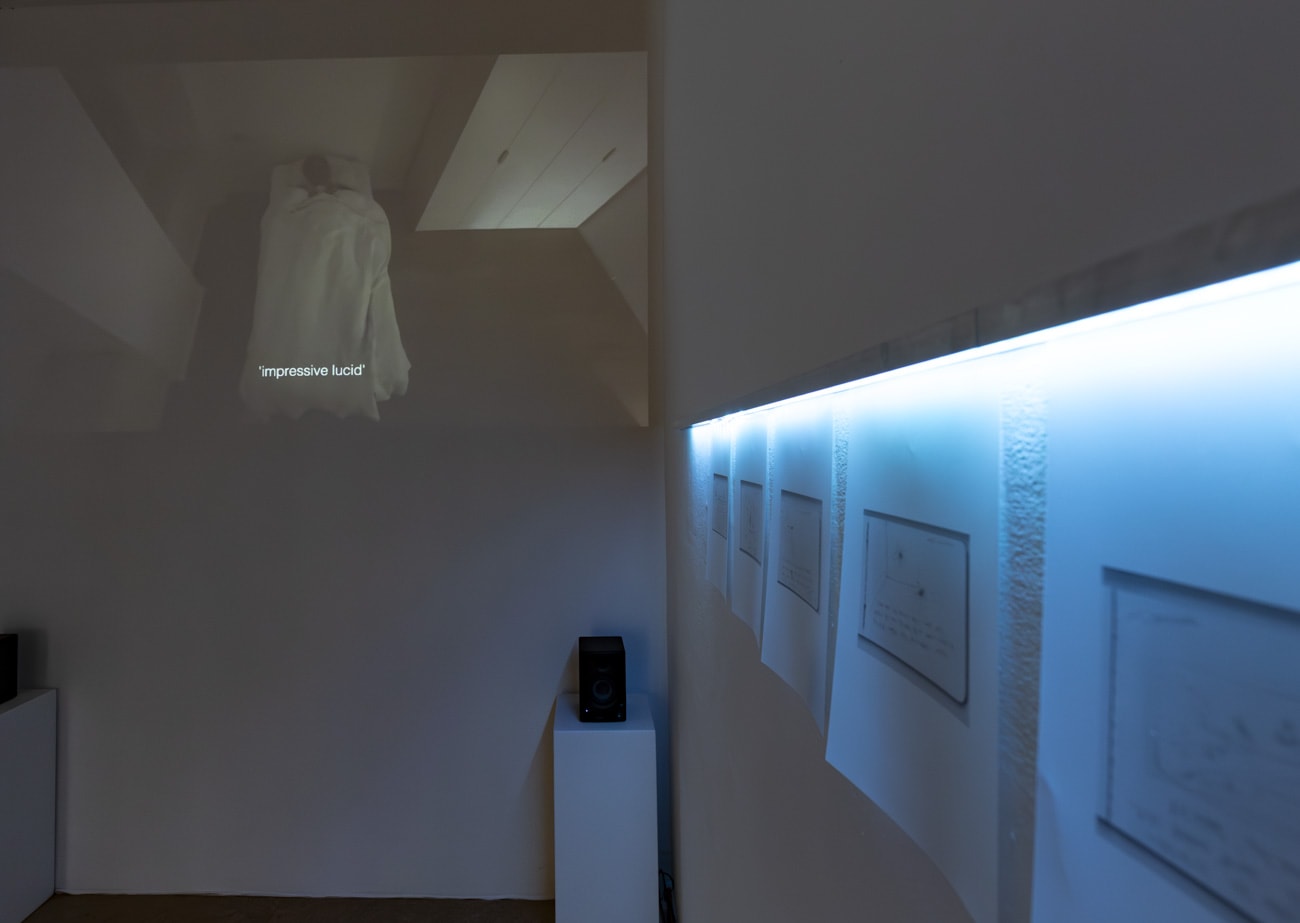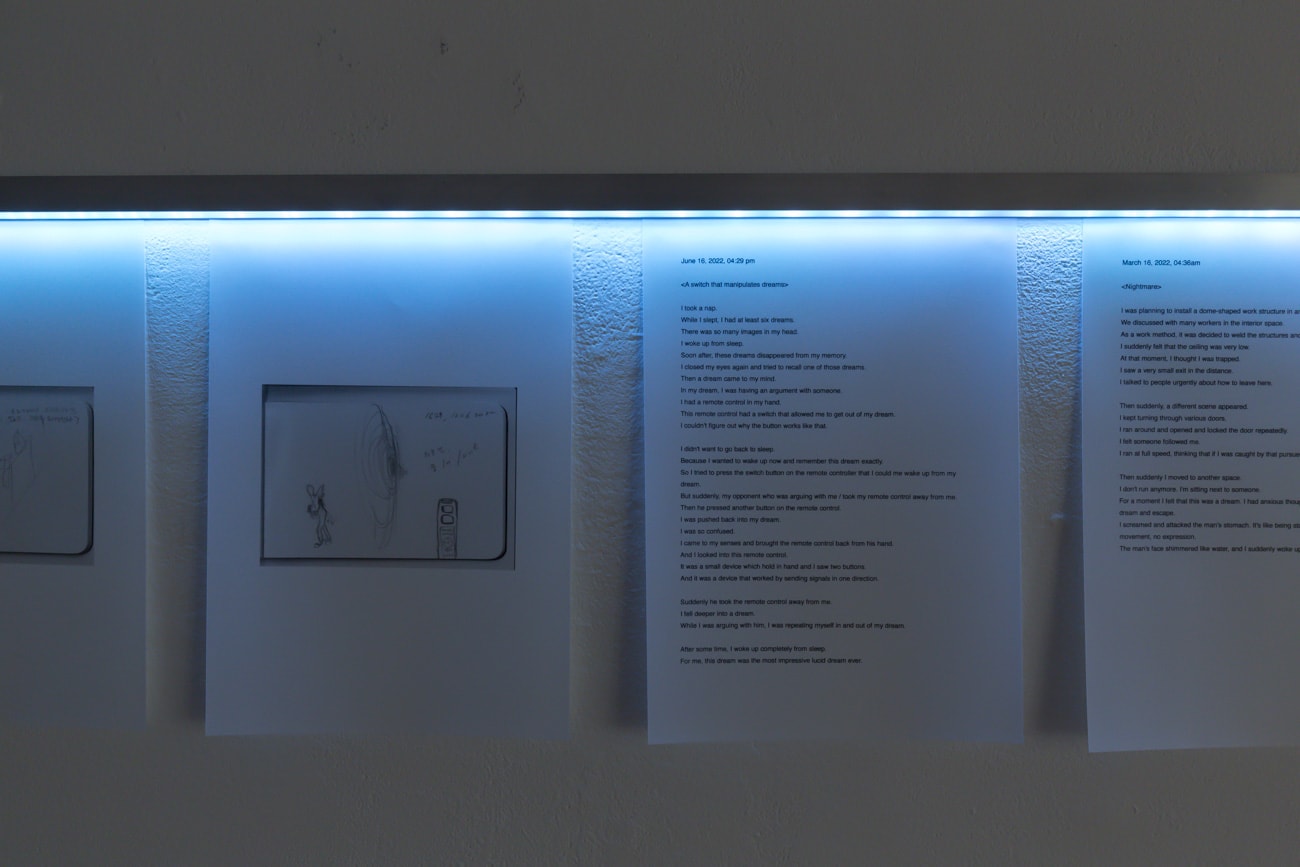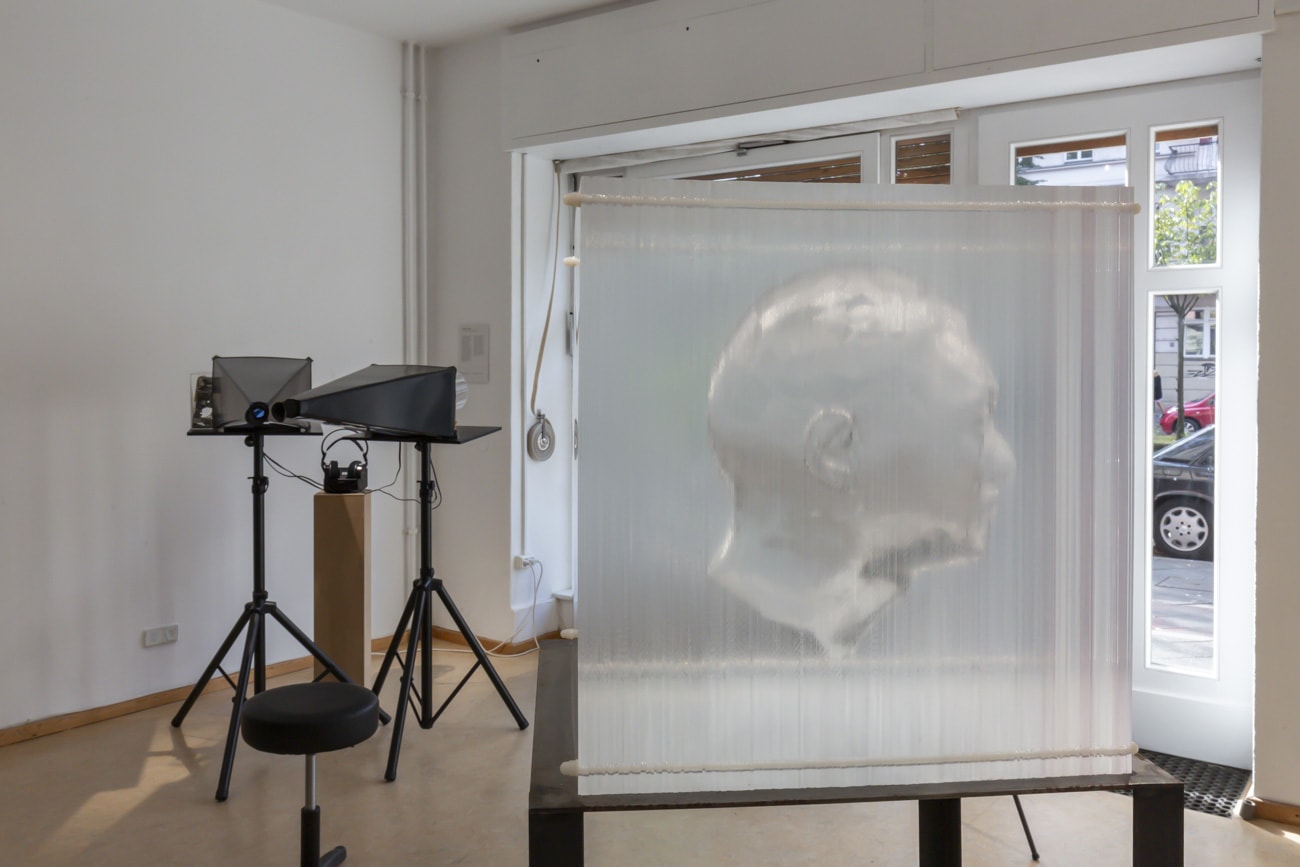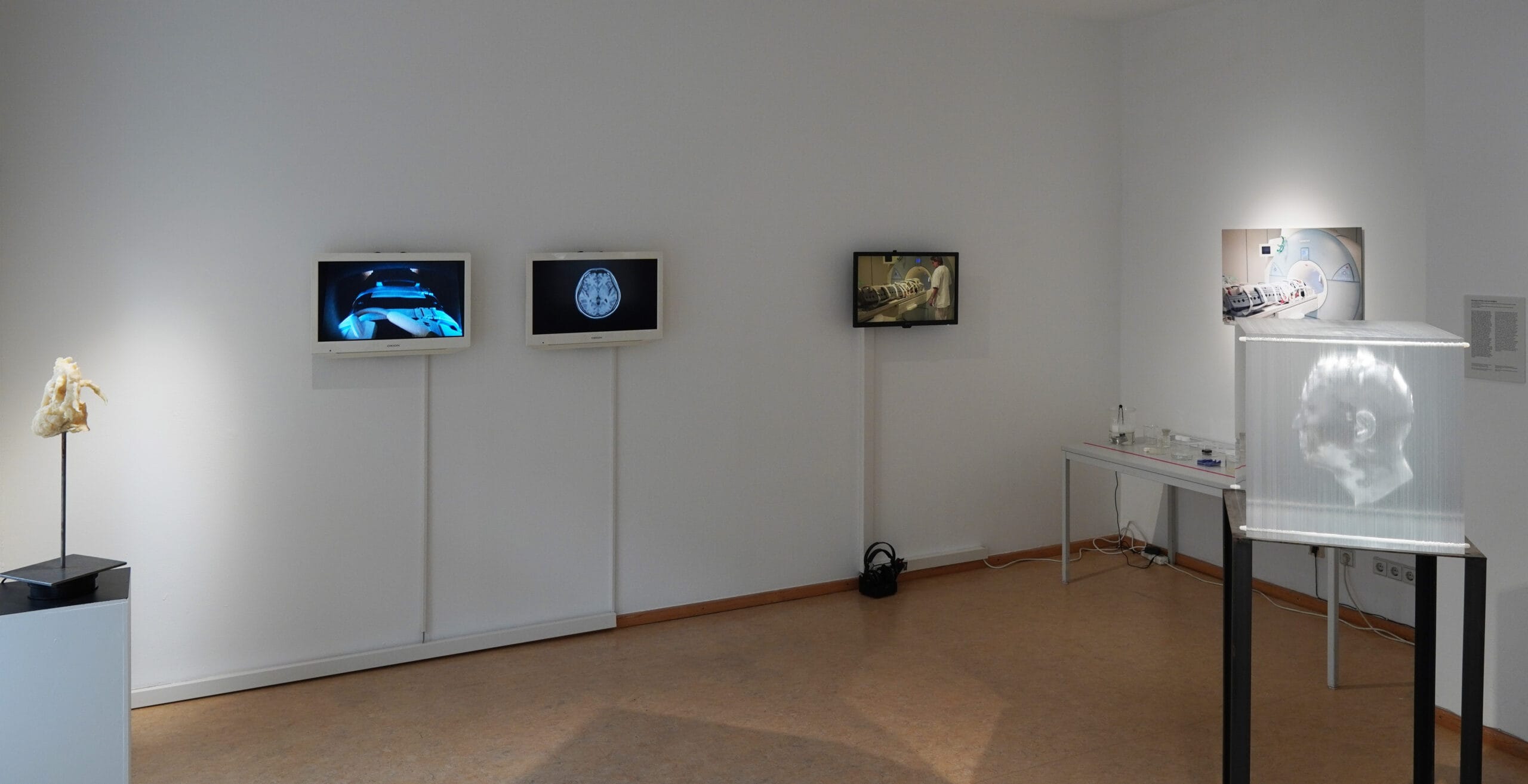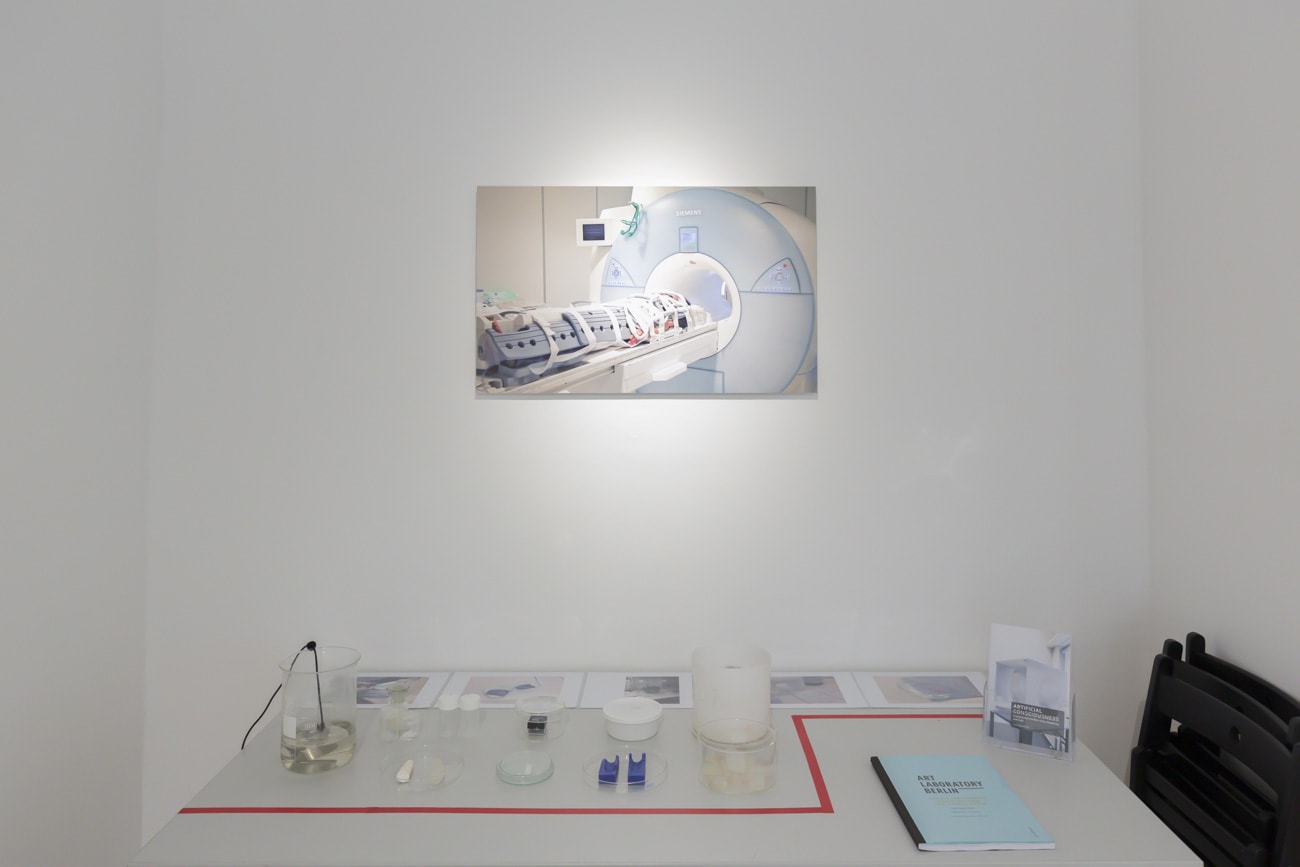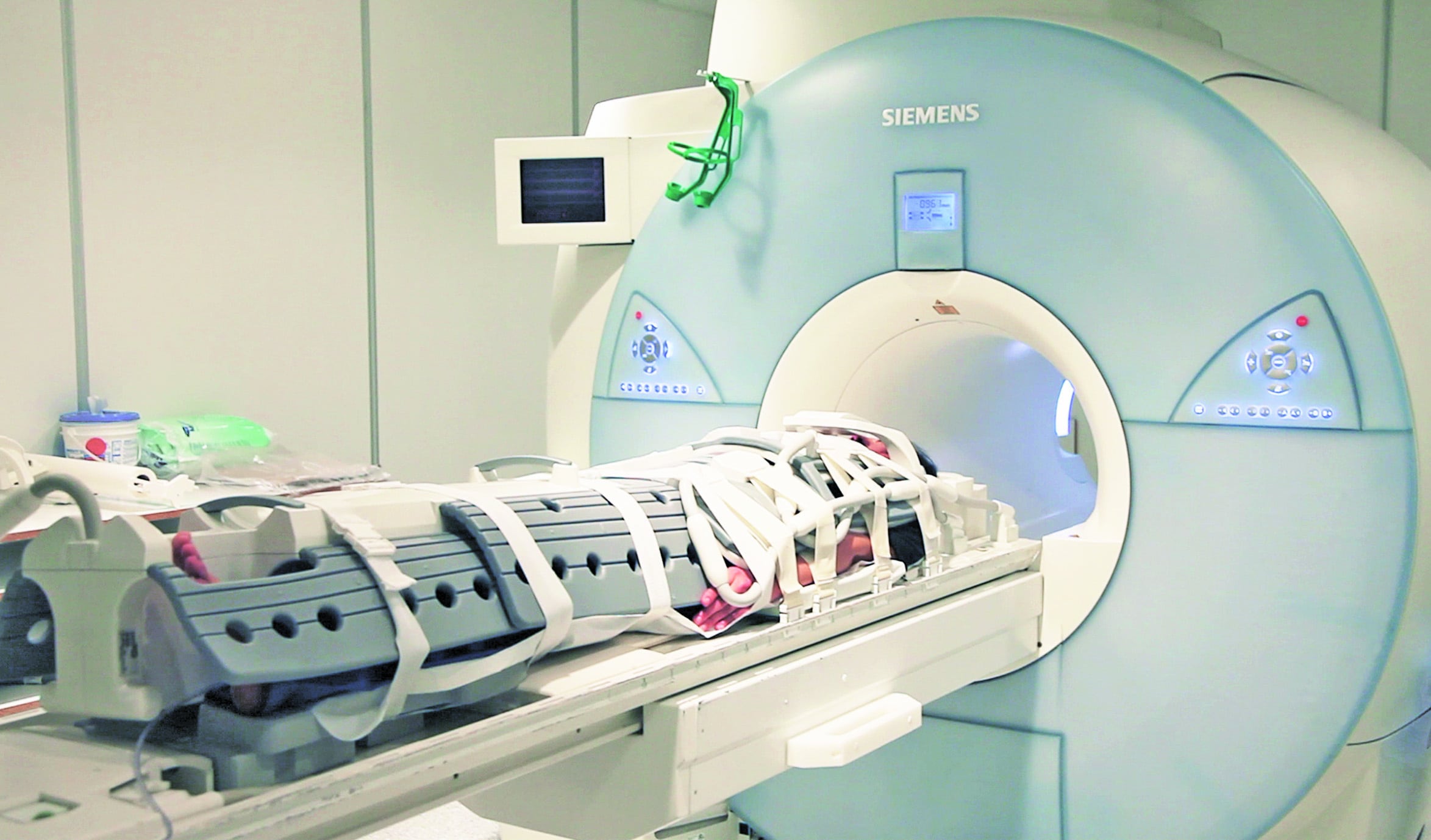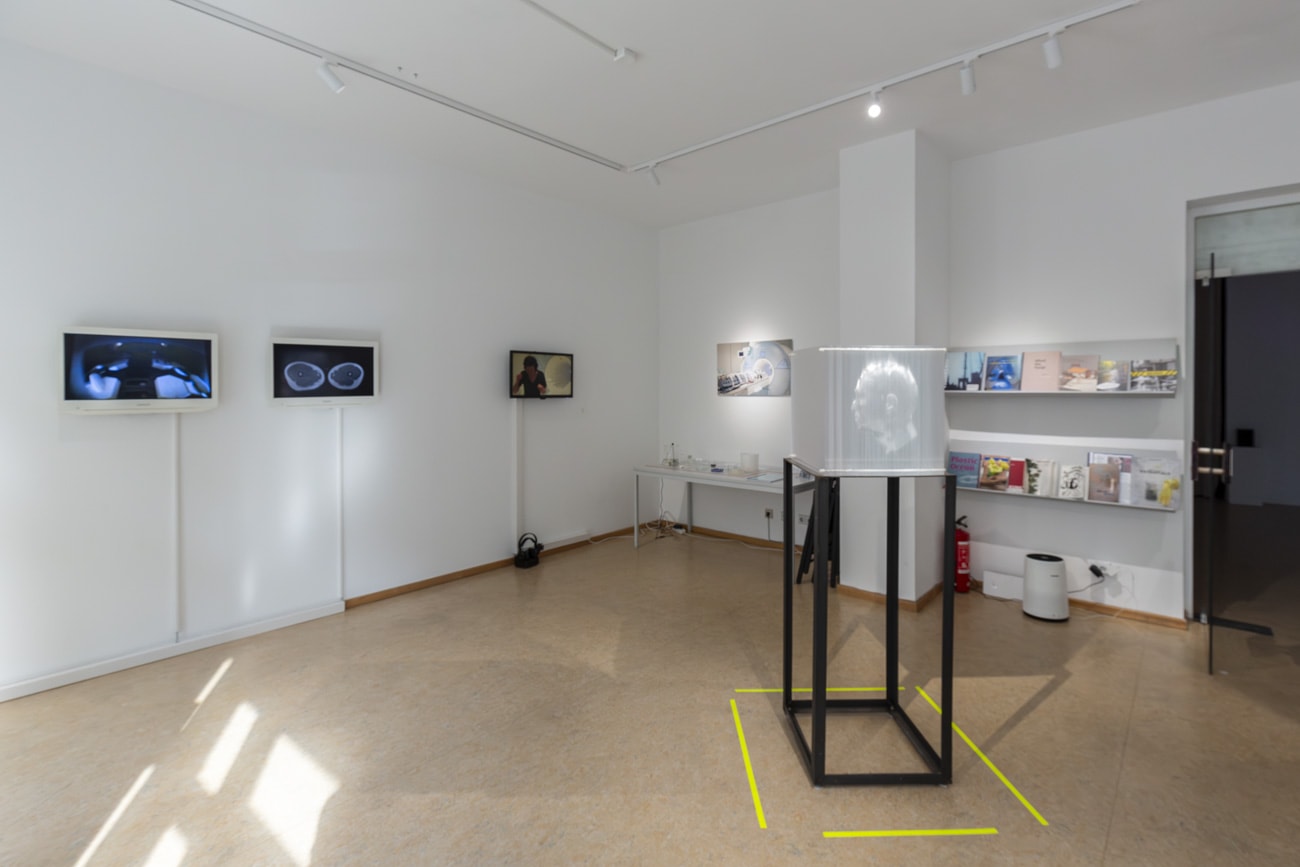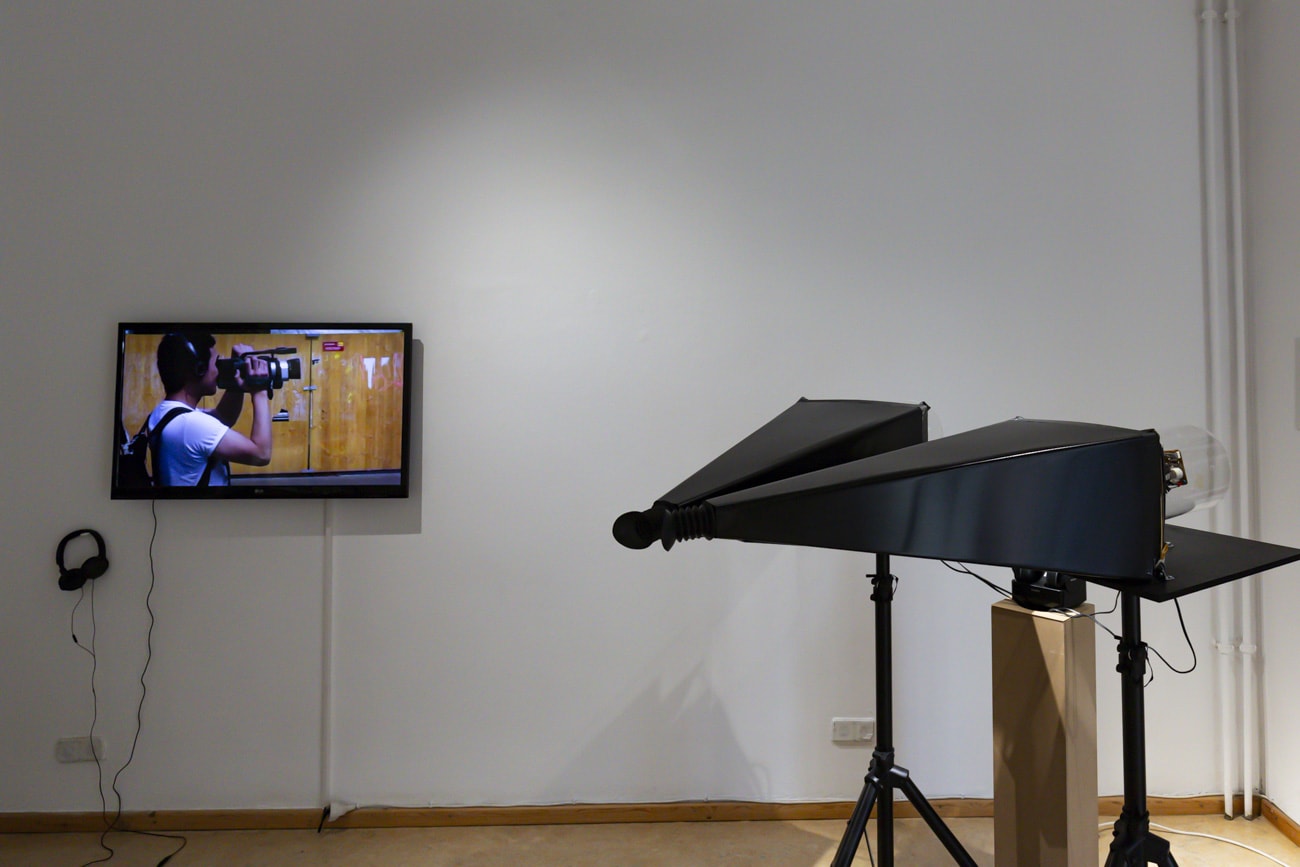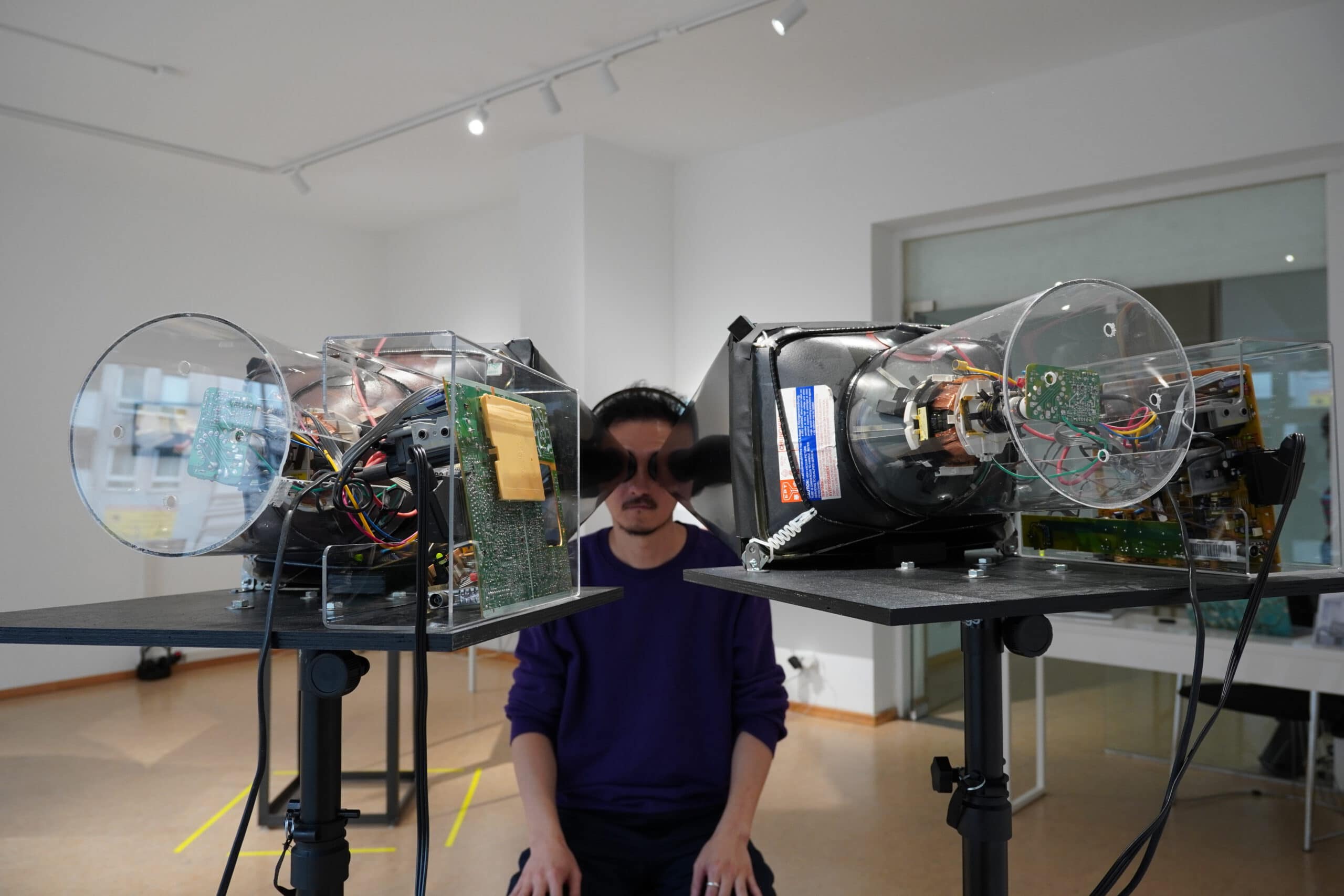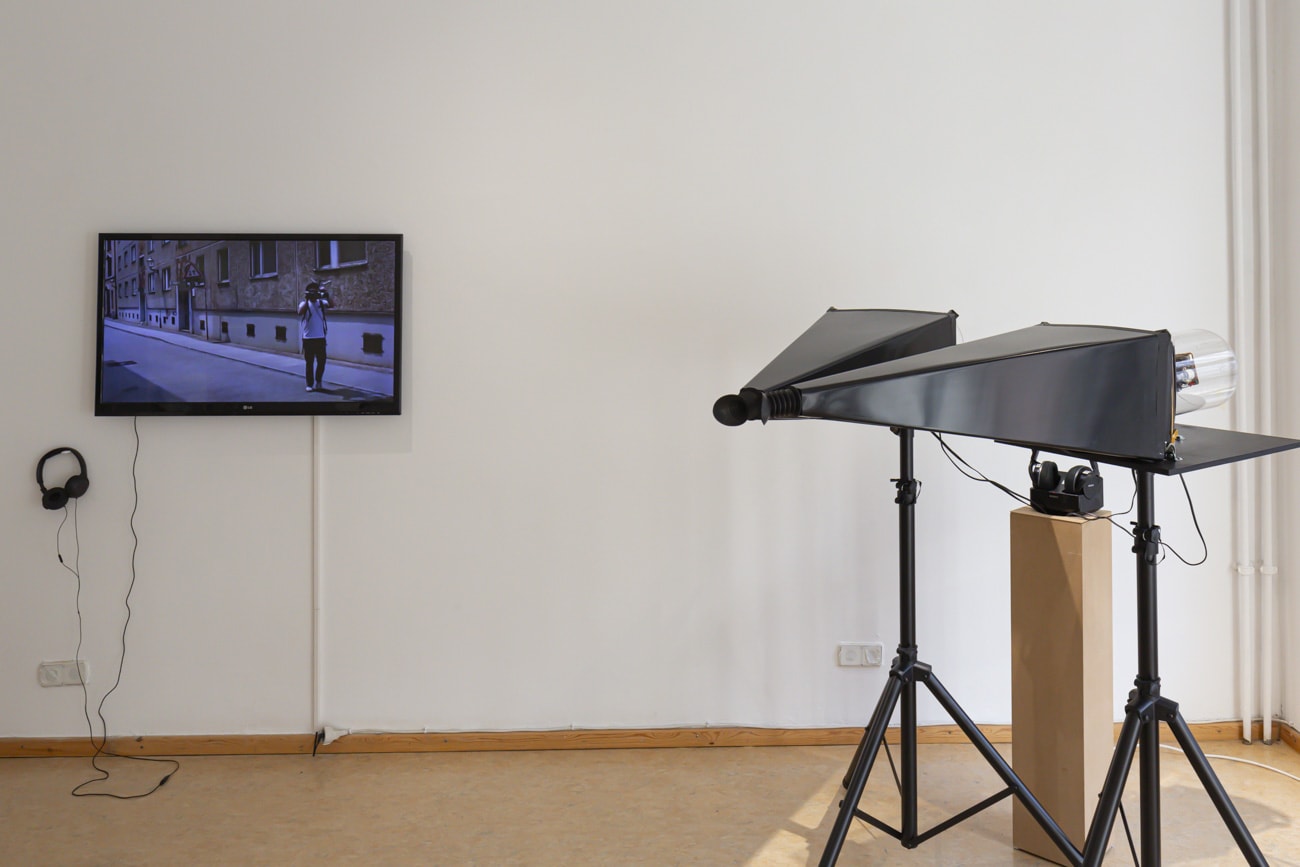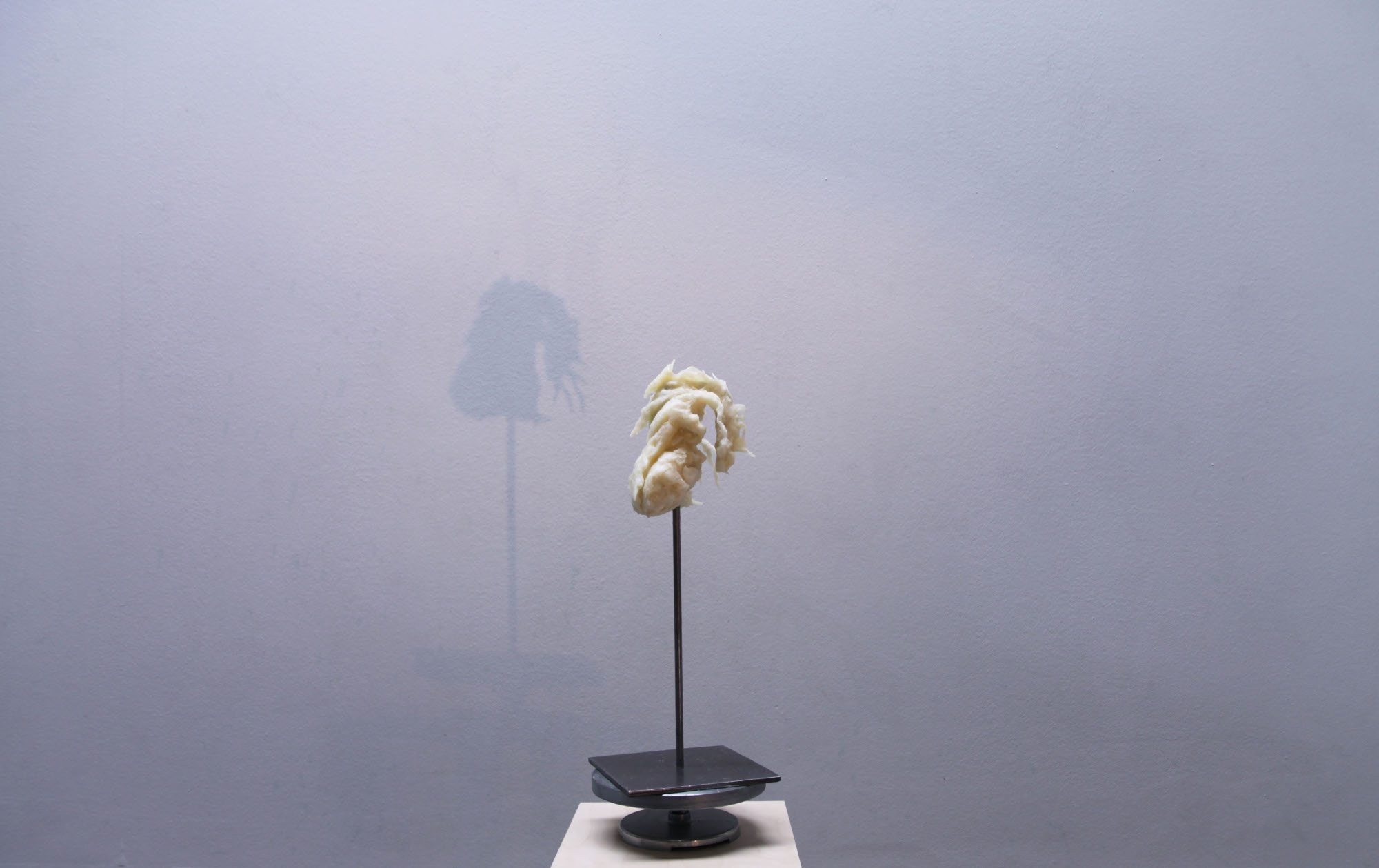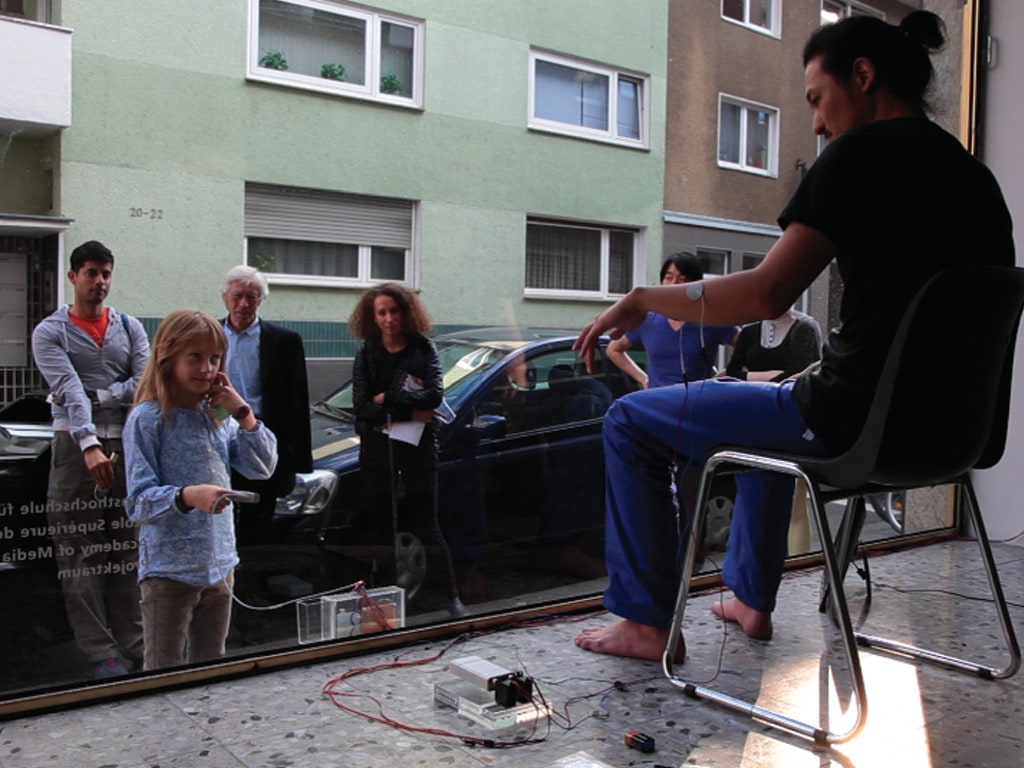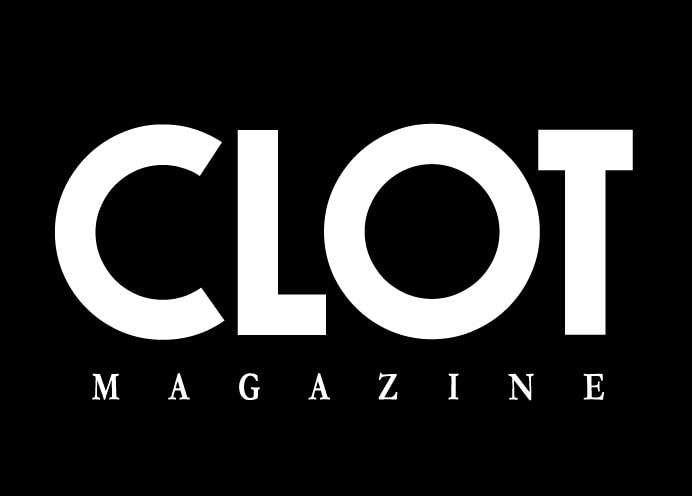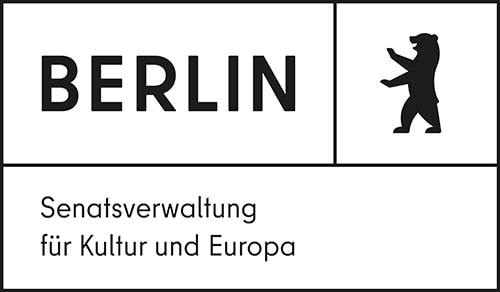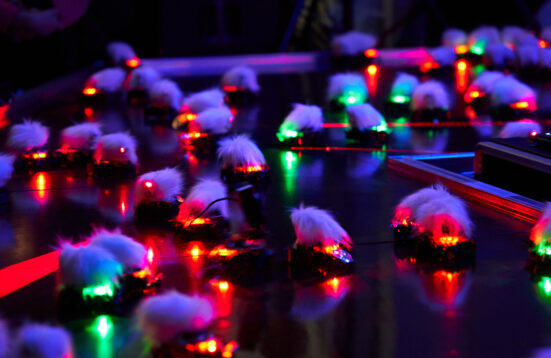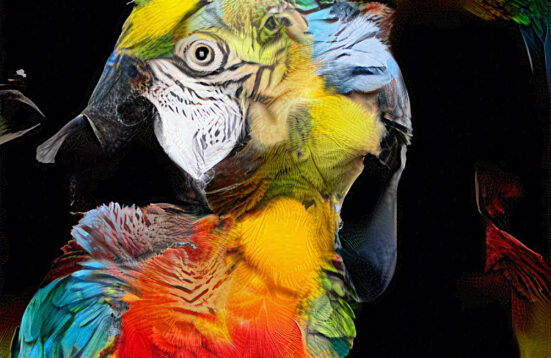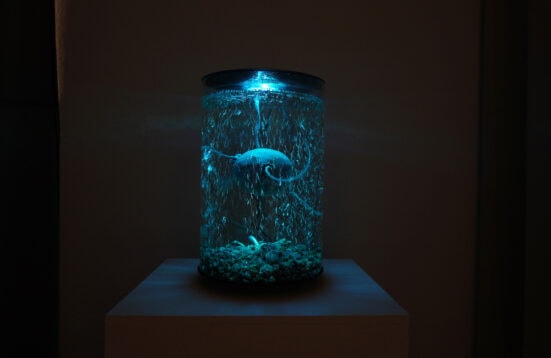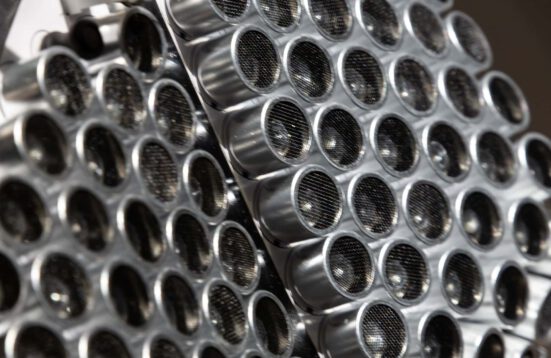ARTIFICIAL CONSCIOUSNESS
Exposing the Invisible: Data, Rendering and Code
HyungJun Park
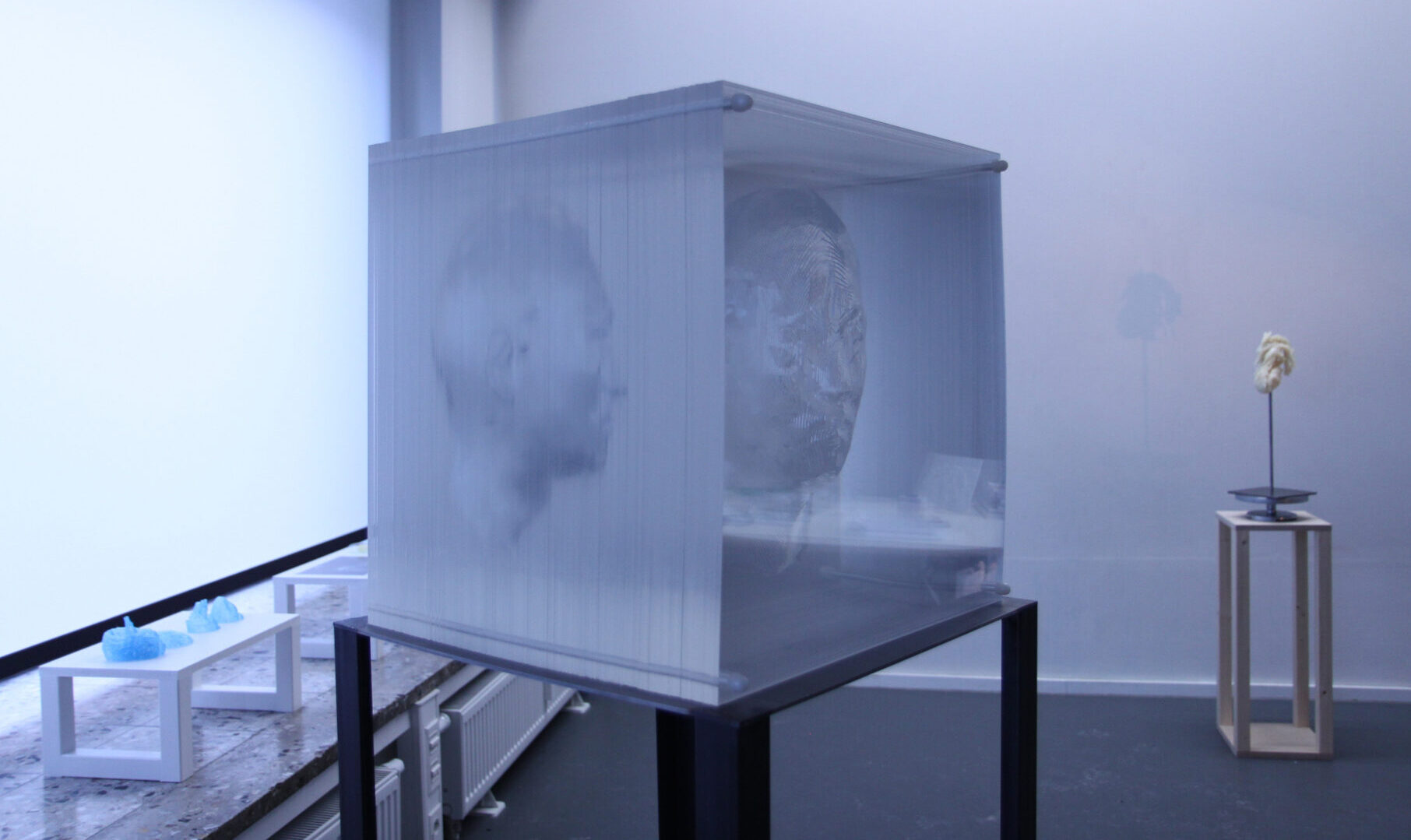
HyungJun Park: I am an Artefact, 2012, mixed media installation, MRI scan, two-channel video, beeswax, acrylic panel, Aerogel, ultrasonic humidifier
HyungJun Park’s solo exhibition Artificial Consciousness. Exposing the Invisible: Data, Rendering and Code brings together three artworks, created in the last fifteen years. Park’s artistic exploration focuses on the relationship between machine and humans as well as humans and nonhuman beings. He connects and exposes nonhuman sensorial experiences through technological tools for human body experiences that mimic other perceptions.
Somniloquy is Park’s ongoing research and his Ph.D. project, focusing on human and machine dreaming. Park has been keeping dream diaries to explore human and machine consciousness. Within the hype of AI tools and their accessibility, machine learning tools have been used more often in the new media art scene in recent years. AI tools have been criticised as heavily biased – white, Eurocentric, homophobic and misogynist through the content it has learned from its users. In contrast, in his artistic research, Park delves into machine learning from a subjective point of view and creates a unique dataset based on the dreams and images he has collected over the years. Based on his dreams, the AI tool creates (or dreams) new, humorous and absurd narratives based on the text and image that has been fed by the artist.
I am an Artefact explores what the soul is and traces the location of the soul in the human body through scientific and speculative perspectives. The ancient Egyptians believed that the soul was in the heart and the Babylonians believed that the soul was in the liver. Modern humans understand that there is no soul or that it is an emotion caused by a chemical reaction of the brain. The human body and soul are Park’s main concerns in this project, related to the technological age. The process of the artwork I am an Artefact started with full body MRI scans of himself. The artist created a series of objects with different materials, such as a 1:1 size of Park’s heart sculpted with beeswax, a head scan, that is used for a 3D cut glass sculpture, and forefinger prints sculpted with aerogel – a material which is renowned as the lightest solid. Through this set of works, Park has given a speculative, physical agency to the soul and distributed the meaning of the soul and its materiality to ‘natural and artificial materials.’
Utopia is an interface that allows the audience to explore visual senses from a nonhuman perspective. This interface aims to create a connection between humans and machines. Analog monitors symbolise the anatomical eyes of humans. A funnel is installed in front of the monitor, so the audience can only see each monitor with one of their eyes independently. Human vision, unlike spiders or insects, cannot see both objects at the same time. However, by looking at the two monitors with this separation, the audience gains a new visual and cognitive experience, exploring the expandability of their human senses.
HyungJun Park lives and works in Berlin and explores interdisciplinary artwork through collaboration with various research institutes. In 2012, he collaborated with the Institut für Diagnostische und Interventionelle Radiologie in Düsseldorf, Germany, and in 2013, he resided and worked at the Institute of Machinery Research in Korea. In 2015, he was selected for the scholarship residency called Arts-Science-Economy in Schöppingen, Germany. His work was exhibited and collected at the Center for Art and Media in Karlsruhe, Germany (ZKM). He is a person who likes to be open and his works are based on art and science. His interests include visual cognition, computer technology, the philosophical self and the artistic body.
Press Feedback
Schlafreden. Eine künstlerische Erkundung zu Künstlicher Intelligenz und menschlichem Bewusstsein. Interview mit HyungJun Park, in art-in-berlin by Carola Hartlieb (23 September 2023)
Insight: Artificial Consciousness–HyungJun Park, exposing the invisible for all to see, in CLOT by Lyndsey Walsh (20 September 2023)

